Discover the 10 Best-Tasting Sweetest Tomatoes to Grow: from Cherry to Heirloom and Sun Gold
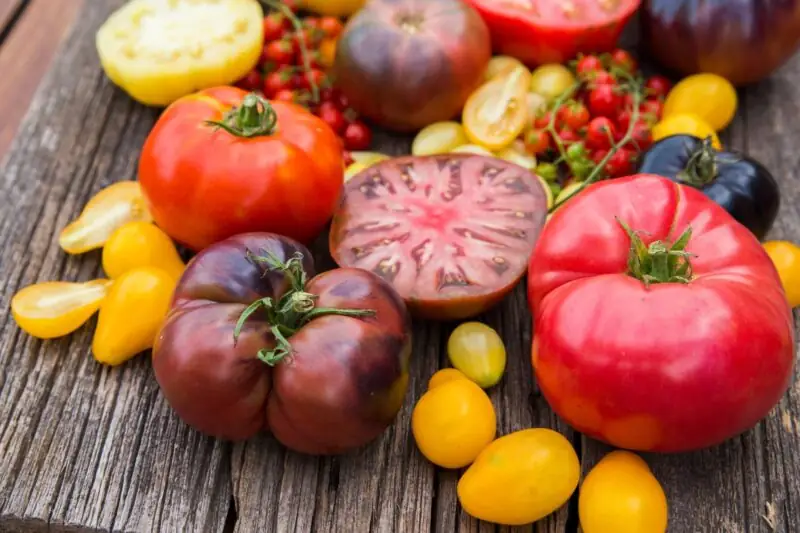
Discover the world of sweet tomatoes, a key ingredient that elevates the taste of countless dishes. Gardeners and chefs alike treasure these varieties for their ability to add a burst of flavor to any culinary creation. Sweet tomatoes are not just a delight for the taste buds but also a vibrant addition to gardens, bringing color and life to every corner.
The Science of Sweetness in Tomatoes
Understanding the Brix Scale
The Brix scale plays a crucial role in determining a tomato’s sweetness. This measure of sugar content gives gardeners and culinary experts a concrete way to gauge the potential flavor of tomatoes. Higher Brix ratings often indicate sweeter varieties, making them sought-after choices for both fresh eating and cooking.
Factors Influencing Tomato Sweetness
Several factors contribute to a tomato’s sweetness, including:
- Genetics: Some varieties are naturally sweeter than others.
- Sunlight Exposure: Ample sun boosts sugar production, enhancing sweetness.
- Watering Practices: Proper irrigation can affect the concentration of sugars in the fruit.
- Soil Health: Nutrient-rich soil supports healthy growth and optimal flavor.
By understanding these elements, gardeners can select and cultivate tomato varieties, like Sungold or Brandywine, that promise the sweetest fruits, turning their gardens into a haven for the most flavorful tomatoes.
Top 10 Best-Tasting Sweet Tomato Varieties
Cherry Tomato: from Sun Gold to Honey Drop
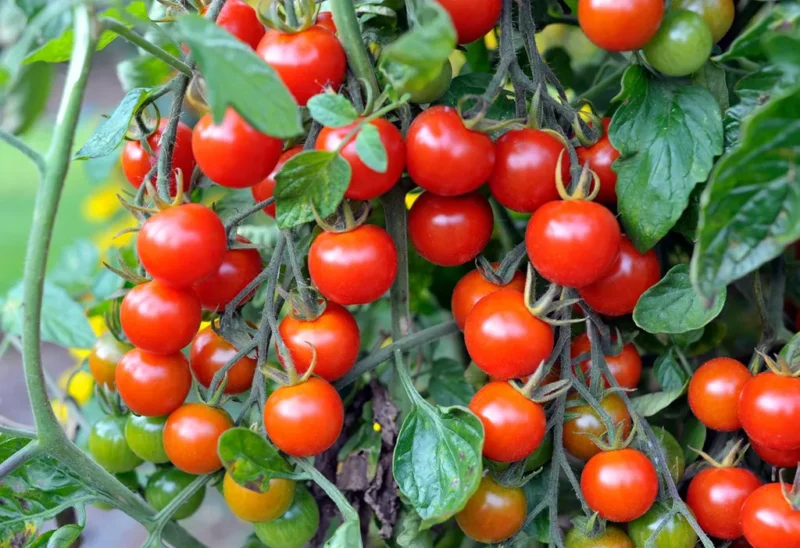
Sun Gold
This variety is a real gem in the garden, boasting a tangy yet sweet flavor that explodes in your mouth, perfect for those in search of the best tasting tomato. The golden-hued tomatoes not only add a pop of color to your salads but also rank high on the Brix scale, ensuring a delightful taste experience. Sungold tomatoes being a prime example of meaty, flavorful options.
Black Cherry
For those who love a hint of smokiness with their sweetness, Black Cherry tomatoes are the way to go. These dark, rich fruits are perfect for snacking or adding depth to your dishes.
Sakura
A robust yielder, Sakura cherry tomatoes offer a consistently sweet taste. They’re perfect for gardeners who love to snack straight from the vine or wish to add a touch of sweetness to their salads.
Sun Sugar
Packed with nutritional benefits, Sun Sugar tomatoes bring a rich, sweet flavor that’s hard to beat. Ideal for those mindful of their health without compromising on taste.
Honey Drop
Not as widely known but equally delightful, Honey Drop tomatoes surprise with their honey-like flavor. They’re perfect for those seeking a unique sweet taste in their cherry tomatoes.
Plum and Mini-Plum Tomatoes
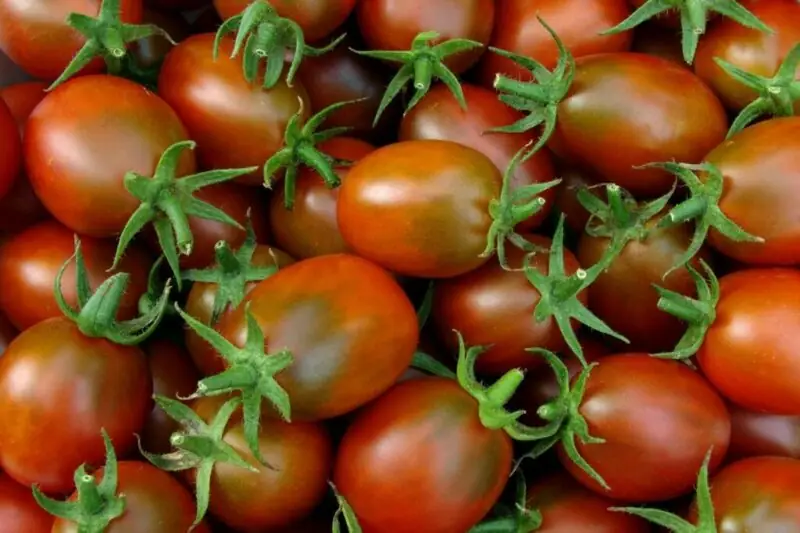
Rosada
This baby plum variety tops the sweetness charts. Rosada tomatoes thrive in both greenhouses and gardens, bringing exceptional flavor and a slightly thicker skin ideal for various culinary uses.
Floridity
Known for their disease resistance and vigorous growth, Floridity tomatoes are a fantastic choice for gardeners looking for reliability without sacrificing sweetness.
Beefsteak and Large Varieties
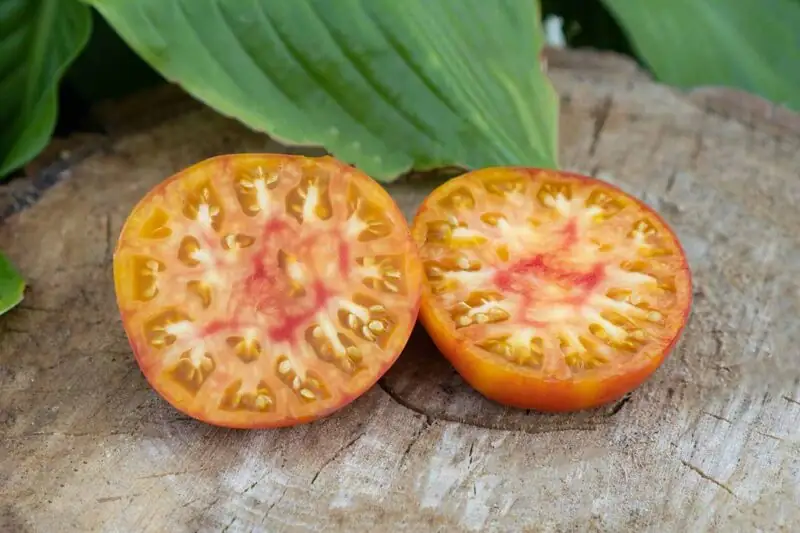
Big Rainbow
Big Rainbow tomatoes are a feast for the eyes and the palate, often considered among the best-tasting cherry tomatoes. Their large, colorful fruits boast deep golden flesh that’s rich in sweetness, making them a standout variety for any garden.
Pineapple Tomato
An heirloom variety with a distinctive shape and flavor, Pineapple tomatoes are as sweet as they are unique. Their fresh, sweet flavor is perfect for those looking to diversify their tomato harvest.
Heirloom Varieties
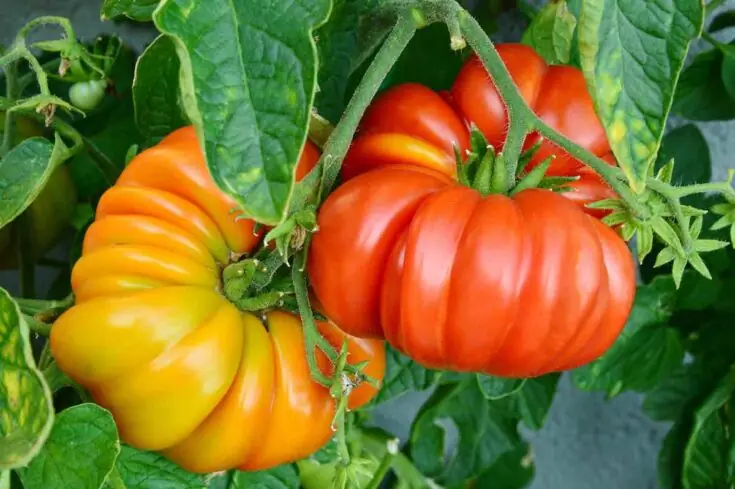
Prudens Purple
Prudens Purple tomatoes offer deep golden fruits with a robust flavor and sweetness. Their firmness and less juicy nature make heirloom tomatoes ideal for canning, ensuring you can enjoy their delightful taste year-round.
Growing Sweet Tomatoes: Tips and Tricks
Enhancing the natural sweetness of your tomatoes begins with three critical elements: sunlight, soil, and water, especially important for indeterminate varieties like Sungold or Brandywine. Full sun exposure, at least six hours a day, encourages higher sugar content. For soil, aim for well-draining, nutrient-rich earth to prevent waterlogged roots and to support healthy growth. Regular feeding with a balanced fertilizer ensures your tomatoes receive all necessary nutrients to flourish and develop their fullest flavors.
Common Challenges
Gardeners often face challenges like pest management, disease prevention, and adapting to their local climate. Implementing integrated pest management (IPM) strategies can help manage pests with minimal harm to the environment. Diseases like blight or wilt, and Septoria Leaf Spot require vigilant monitoring and proper plant care to prevent. Climate considerations include providing shade during extreme heat or using greenhouses in cooler areas to extend the growing season.
Harvesting for Peak Sweetness
The best time to harvest tomatoes for peak sweetness is when they’re fully colored and firm to the touch. Morning harvests, when sugars are concentrated, can capture the best flavor. Look for a deep, uniform color and a slight give when gently squeezed.
Culinary Uses of Sweet Tomatoes
Sweet tomatoes shine in both fresh and cooked dishes. Their natural sugar enhances salads, salsas, and sandwiches, and when roasted or cooked down into sauces, their sweetness intensifies, adding depth to your culinary creations. Experiment with recipes like fresh tomato bruschetta or homemade tomato basil soup to highlight their flavor.

FAQs
- How do I increase the sweetness of my tomatoes?
Enhancing sweetness involves ensuring ample sunlight, proper fertilization, and choosing naturally sweet varieties. - Can sweet tomatoes like Sungold be grown in pots, thriving as indeterminate varieties with proper care?
Absolutely! Ensure your pot has adequate drainage and is large enough to accommodate growth. Use high-quality potting soil and place in a sunny spot. - What are the best conditions for growing sweet tomatoes?
Sweet tomatoes thrive in full sun, with well-draining soil, regular watering to keep the soil moist but not waterlogged, and protection from extreme temperatures.